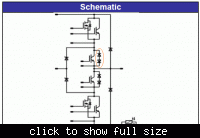lawcuenca
Junior Member level 3
Hi All,
I am looking for a diode with the subject ratings. I have encountered many diodes before but I haven't encountered one with VF as large as 9.07V. Do you have any idea what kind (rectifier, fred, schottky, zener, etc.) this is?
Thanks,
Law
---------- Post added at 03:43 ---------- Previous post was at 03:28 ----------
By the way, it is stated in the maximum rating that the diode's maximum IF=2A but when you look at the electrical parameters, they measured VF=9.07 using IF=20A. I suppose this means that the true rating is IF=20A, correct? Also, this is part of a power module. Thanks.
I am looking for a diode with the subject ratings. I have encountered many diodes before but I haven't encountered one with VF as large as 9.07V. Do you have any idea what kind (rectifier, fred, schottky, zener, etc.) this is?
Thanks,
Law
---------- Post added at 03:43 ---------- Previous post was at 03:28 ----------
By the way, it is stated in the maximum rating that the diode's maximum IF=2A but when you look at the electrical parameters, they measured VF=9.07 using IF=20A. I suppose this means that the true rating is IF=20A, correct? Also, this is part of a power module. Thanks.
